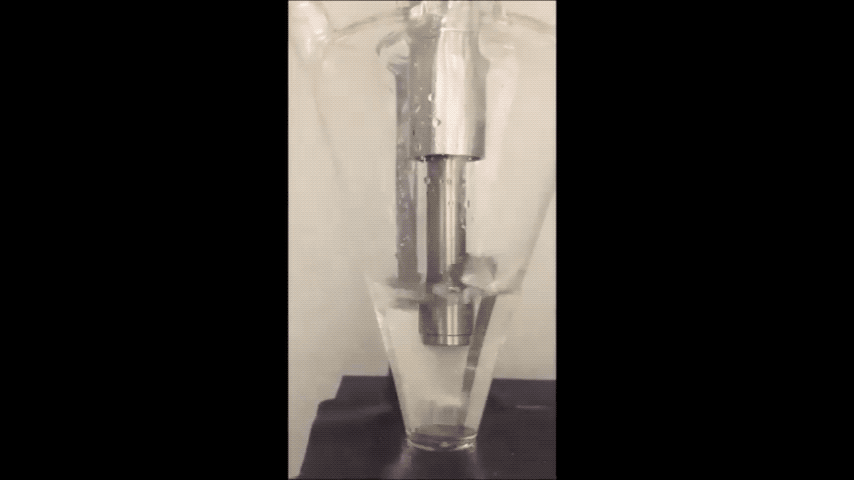Scientists are a step closer to creating sodium batteries as a replacement for lithium

Pic: Bloomberg Creative / Bloomberg Creative Photos via Getty Images
Scientists think they have discovered a way to stop sodium batteries from exploding — which could lead to the replacement of lithium in some batteries.
Sodium is a very cheap and abundant alternative to lithium — but it has been known to turn purple and explode if exposed to water – even just water in the air (see GIF below).
Sodium batteries also lose energy the first few times a battery charges and discharges.
But researchers from Purdue University in Indiana say they have now made a sodium powder version that is safer and holds a charge more effectively.
“Adding fabricated sodium powder during electrode processing requires only slight modifications to the battery production process,” said Vilas Pol, associate professor of chemical engineering.
“This is one potential way to progress sodium-ion battery technology to the industry.”

Sodium-ion batteries would be physically heavier than lithium-ion, which makes them an unlikely replacement in electric car batteries anytime soon.
But researchers have been investigating the alternative because they could store energy for large solar and wind power facilities at a lower cost.
Lithium Australia boss Adrian Griffin is not convinced that sodium could ever replace lithium, however.
“I think you’ve got to look purely at the physics of the situation,” he said. “You simply can’t exceed the energy density that you’re going to get with lithium.”
Mr Griffin said sodium may compete in some aspects, but there had already been massive investment in lithium-ion battery technology.
“There is almost no turning back because the investment has been so large for the type of technology that’s being developed today,” he said.
“We got a lot of press over the gigafactory and Elon Musk in Nevada building about 30 gigawatts.
“Since that time there’s been another half a dozen of those built and committed to construction and finance. There’s another 10 of them.
“So we already know what the production profile is looking like. Substitutes are not an option because people have already committed the capital to the current technology and these things will go ahead.”
- Subscribe to our daily newsletter
- Bookmark this link forsmall cap news
- Join our small cap Facebook group
- Follow us on Facebook or Twitter
Vanadium a better option
In terms of helping meet demand for renewable energy storage, vanadium would be a more likely solution than sodium, Mr Griffin noted.
“I’ve got to say for back-up of renewables, apart from lithium-ion batteries, I think the most promising technology has got to be vanadium flow batteries. They’re just about bulletproof.”
While the electric vehicle space is firmly dominated by lithium-ion, stationary storage is more diverse.
By 2028 Benchmark predicts 50 per cent of the burgeoning stationary storage market will be lithium-ion, and 25 per cent vanadium flow batteries — also known as vanadium redox flow batteries (or VRFBs).
VRFBs are regarded as a safer alternative to lithium-ion and better suited to large-scale applications.
They come at a higher upfront cost but have a far longer life compared to lithium-ion batteries.
UNLOCK INSIGHTS
Discover the untold stories of emerging ASX stocks.
Daily news and expert analysis, it's free to subscribe.
By proceeding, you confirm you understand that we handle personal information in accordance with our Privacy Policy.








